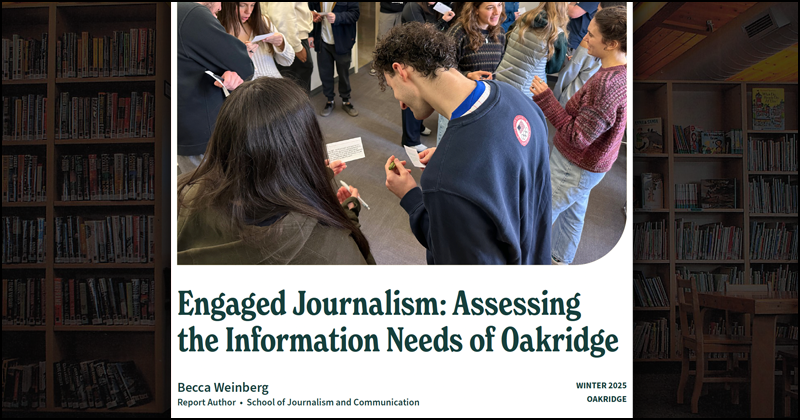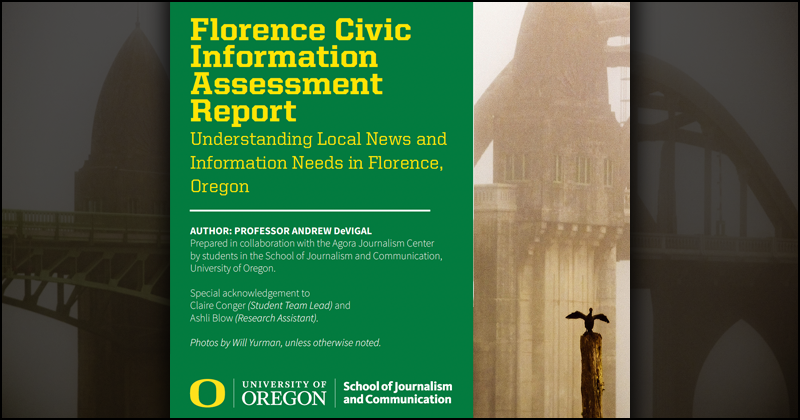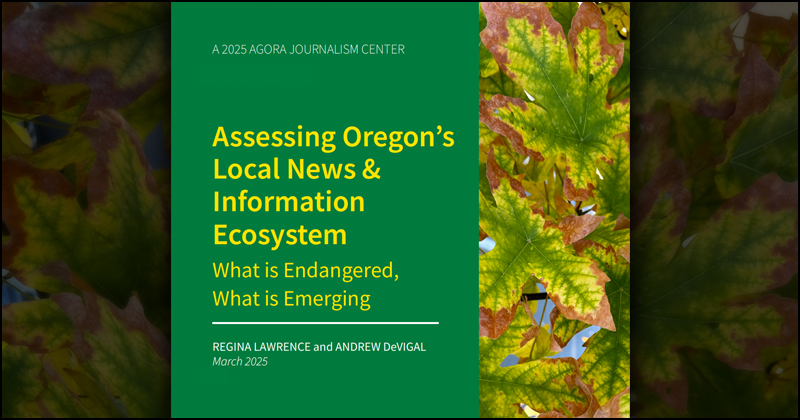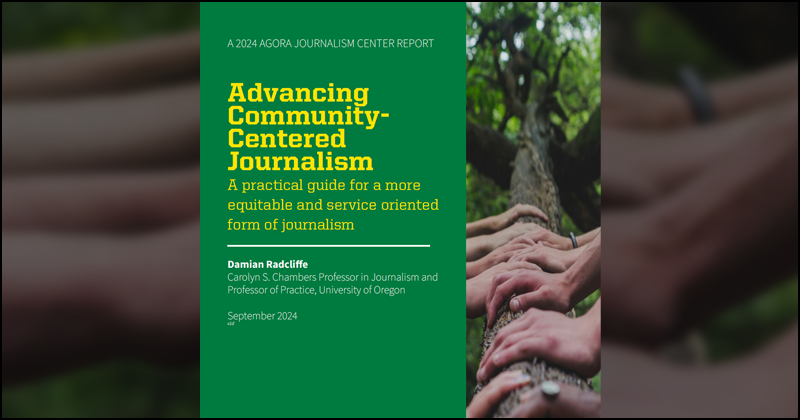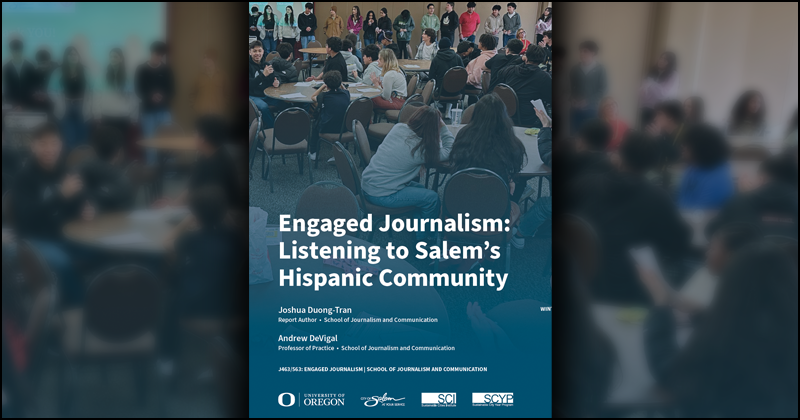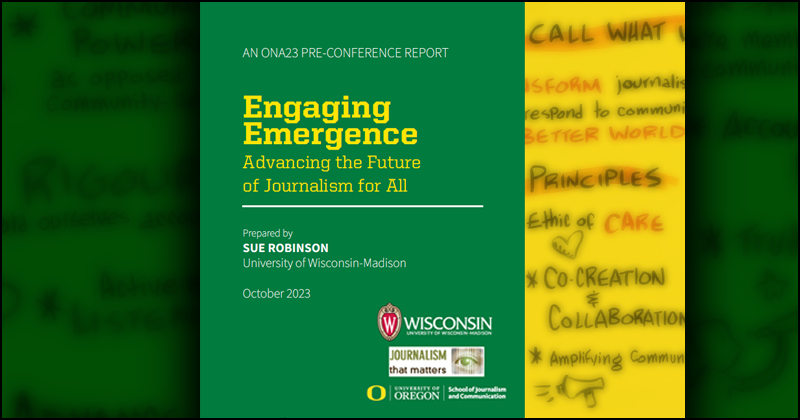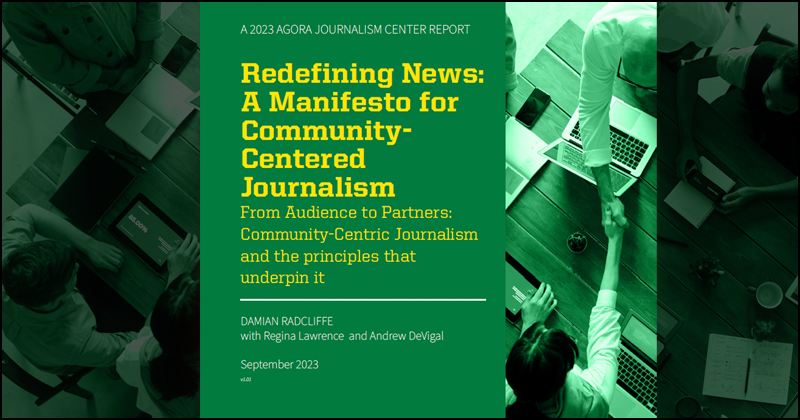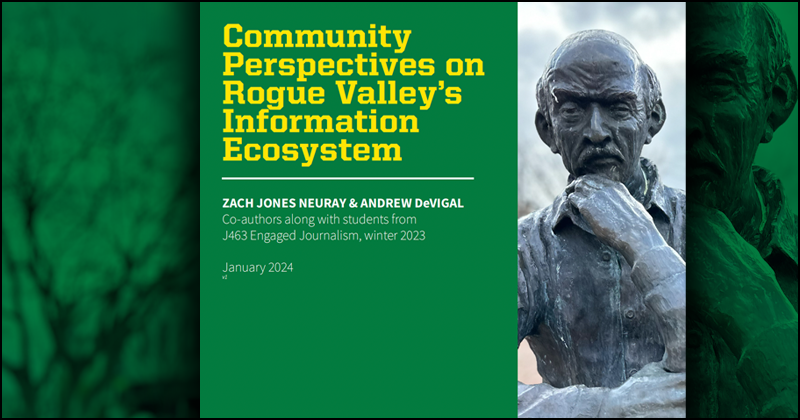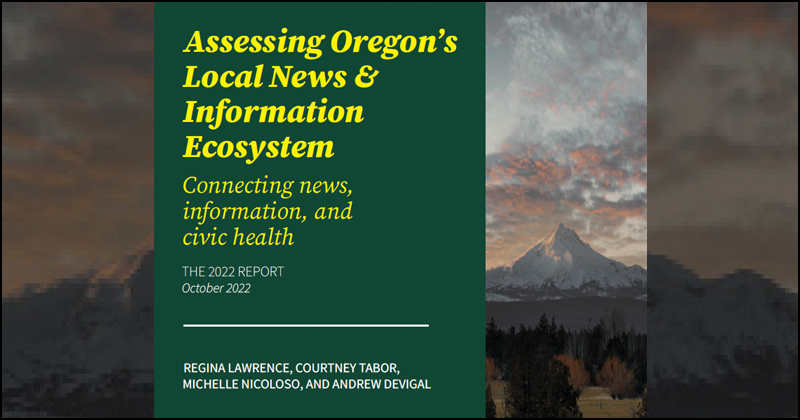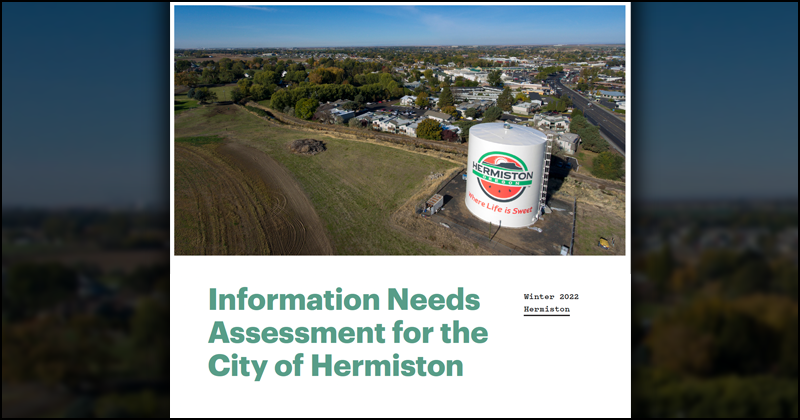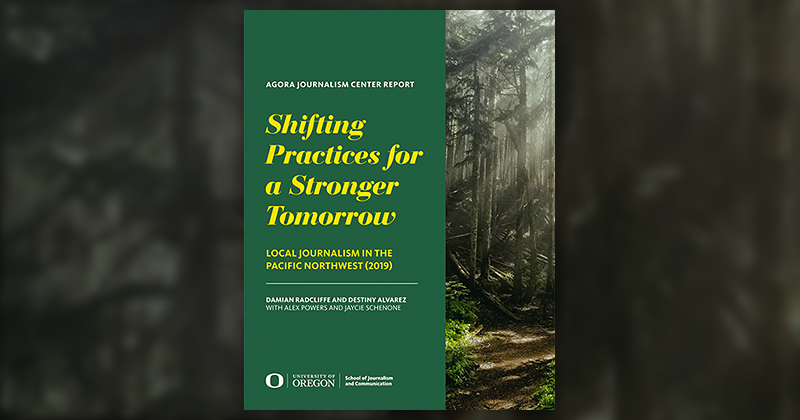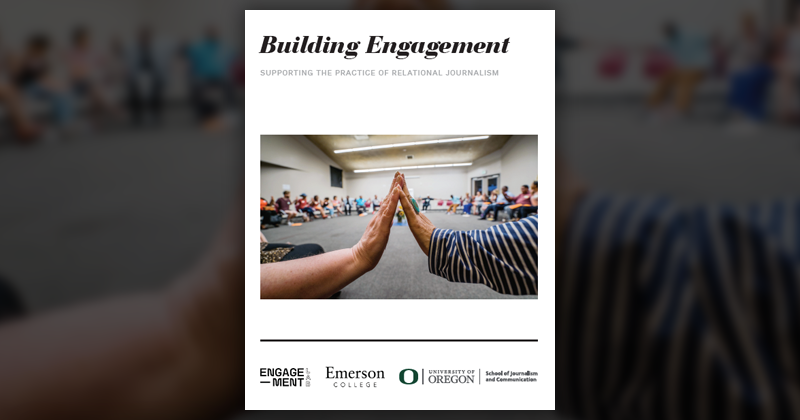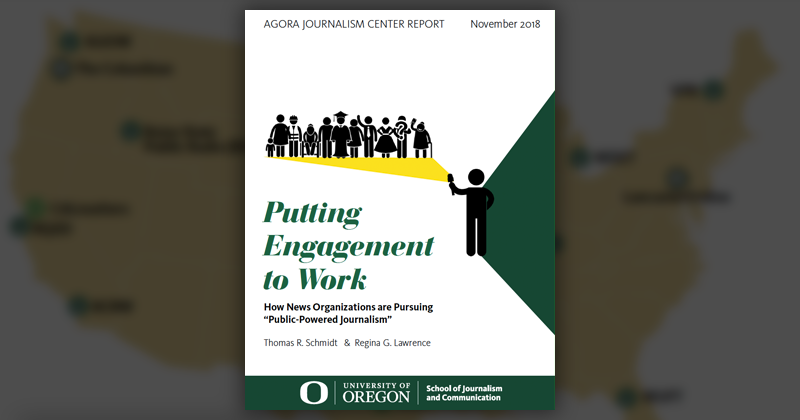A practical and provocative set of lessons and experiences for journalists who are new to the community-centered approach and those already practicing it. Damian interviews over a dozen leading thinkers and practitioners about how CCJ is implemented in various news organizations.
Guided by the Listening Post Collective’s Playbook, the team conducted a bilingual survey, held a listening session with 80 students, and visited community gathering spaces. The assessment revealed that while residents—especially youth—are highly connected through personal networks, social media, and local Spanish-language radio, there remain gaps in access to trusted, timely, and bilingual civic information.
This forward-thinking report makes the case for embracing a more inclusive, community-focused model of journalism, one that prioritizes listening to and collaborating with communities to produce relevant, equitable and impactful news and storytelling. The report features an actionable framework to put the principles of Community-Centered Journalism into practice and explains how this approach differs from traditional models of journalism, with potential benefits including rebuilding trust, tackling inequities, and fostering civic engagement.
The study revealed a community deeply interested in local events, politics, and safety, yet hampered by a fragmented and uneven information landscape. The closure of the Medford Mail Tribune in 2023 left a significant gap, prompting the emergence of new outlets like the Rogue Valley Times and the expansion of existing media.
This report represents one step toward assessing the state of local news in Oregon and what can be done to strengthen it. Counting and mapping Oregon’s local news producers will track further changes. And by looking at initiatives underway around the country, Oregon’s newsrooms, educators, funders, and policy-makers can consider emerging innovations to build the vitality of Oregon’s local news that mean communities’ information needs.
Through surveys, site visits, and facilitated conversations, students explored how residents get and share local news, what sources they trust, and where information gaps exist. Overall, residents rated themselves as fairly well informed. Facebook—especially the “What’s Happening in Hermiston” and “NEW What’s Happening in Hermiston” groups—was the most frequently used source for local updates, though trust in it was mixed.
Read how newsrooms are adapting to address the realities of the journalism industry in 2019. Their experiences, and the solutions they are deploying, are not unique to the Pacific Northwest. We hope that news organizations in the United States and beyond will benefit from these insights.
At a time when journalists are grappling with eroding trust in media and finding new ways to build connections with the communities they serve, we offer a concrete way of talking about and documenting relational engagement.
This report examines how newsrooms across the country are pursuing deeper audience engagement using the tools and methods provided by the company Hearken. Our goal is to examine how newsrooms are taking up the challenge to involve the public at every stage of the news production process.
